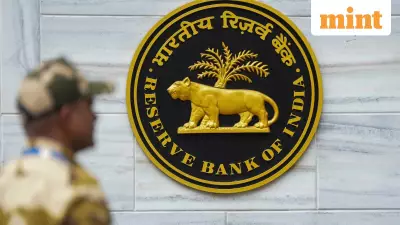
Indian technology stocks maintained their upward trajectory for the third consecutive trading session on Wednesday, November 12, driven by multiple positive developments that boosted investor confidence in the sector. The sustained buying momentum pushed the Nifty IT index close to a two-month peak, establishing technology shares as significant contributors to the recent rally in frontline indices.
Stock Performance Highlights
All ten companies comprising the Nifty IT index traded in positive territory, demonstrating widespread optimism across the sector. Tech Mahindra emerged as the top performer, surging 3.6% to reach ₹1,459. The stock was closely followed by LTIMindtree, MphasiS, and Tata Consultancy Services (TCS), each recording gains of up to 3.5%.
Other major IT players including Persistent Systems, Oracle Financial Services, HCL Technologies, Coforge, Wipro, and Infosys also participated in the rally, with increases ranging between 1.5% and 2.2%. The broad-based participation underscored the sector-wide positive sentiment.
Nifty IT Index Reaches Significant Milestone
Amid the strong performance across individual stocks, the Nifty IT index itself zoomed 2.16% to reach a day's high of 36,911 points. This marked the index's highest level since September 18, representing a notable recovery for the technology sector. The three-day cumulative gain now stands at an impressive 5.10%, factoring in Wednesday's peak performance.
Key Factors Driving the Rally
Several developments contributed to the sustained bullish sentiment toward Indian IT stocks. Most notably, US President Donald Trump's softened stance on H-1B visas during a Tuesday interview provided significant reassurance to markets. Trump acknowledged that America needs to "bring in talent" and stated that the country "does not have plenty of talent," specifically noting that "you can't take people off the unemployment line and say, 'go make missiles.'"
This commentary helped alleviate concerns about potential restrictions on skilled talent flows from India to the United States, which form the backbone of many Indian IT companies' business models. The positive sentiment comes despite the Trump administration's earlier decision in September to impose a $100,000 fee on H-1B visas, a move that had initially stunned employers, students, and workers across both countries.
Additional support came from progress toward resolving the US government shutdown. The Senate passed a temporary funding measure on Wednesday that would keep most government operations functional through January 30, with some agencies funded until September 30. The House of Representatives is expected to consider the spending package upon returning to Washington, with President Trump having already endorsed the measure.
On the trade front, Trump indicated that tariffs on India would be reduced "very substantially" as the two countries move closer to finalizing a trade agreement. Speaking at the swearing-in ceremony of Sergio Gor as the US ambassador to India, Trump confirmed that "we're working on a very good deal with India" and that tariff reductions "will happen at some point."
Market expectations have been building around potential tariff reductions from the current 50% to approximately 15-16%, according to previous reports suggesting a possible November announcement. The high tariffs primarily stem from penalty duties imposed over New Delhi's purchase of Russian oil.
Furthermore, strengthening expectations of another rate cut from the US Federal Reserve provided additional momentum. Private data revealing that US companies shed an average of 11,250 jobs per week in the four weeks ending October 25 highlighted ongoing labor market weakness, supporting the case for further monetary policy easing. Traders currently price in approximately a 68% chance of a 25 basis-point rate cut next month.
Market Implications and Outlook
The consecutive gains in Indian technology stocks reflect growing investor confidence in the sector's near-term prospects. The combination of favorable US immigration policy signals, progressing trade negotiations, resolving government shutdown concerns, and accommodative monetary policy expectations has created a perfect storm of positive catalysts for IT companies.
As Indian IT firms derive substantial revenue from the United States market, these developments directly impact their business outlook and growth potential. The current rally suggests that investors are betting on improved operational environment and sustained demand for Indian IT services in the coming quarters.





